A Complete Analysis of “Woman Reclining” by Henri Matisse

Henri Matisse’s 1921 Woman Reclining depicts a female figure enveloped in patterned drapery on a magenta chaise, exploring color harmony and decorative intimacy.

Henri Matisse’s 1921 Woman Reclining depicts a female figure enveloped in patterned drapery on a magenta chaise, exploring color harmony and decorative intimacy.
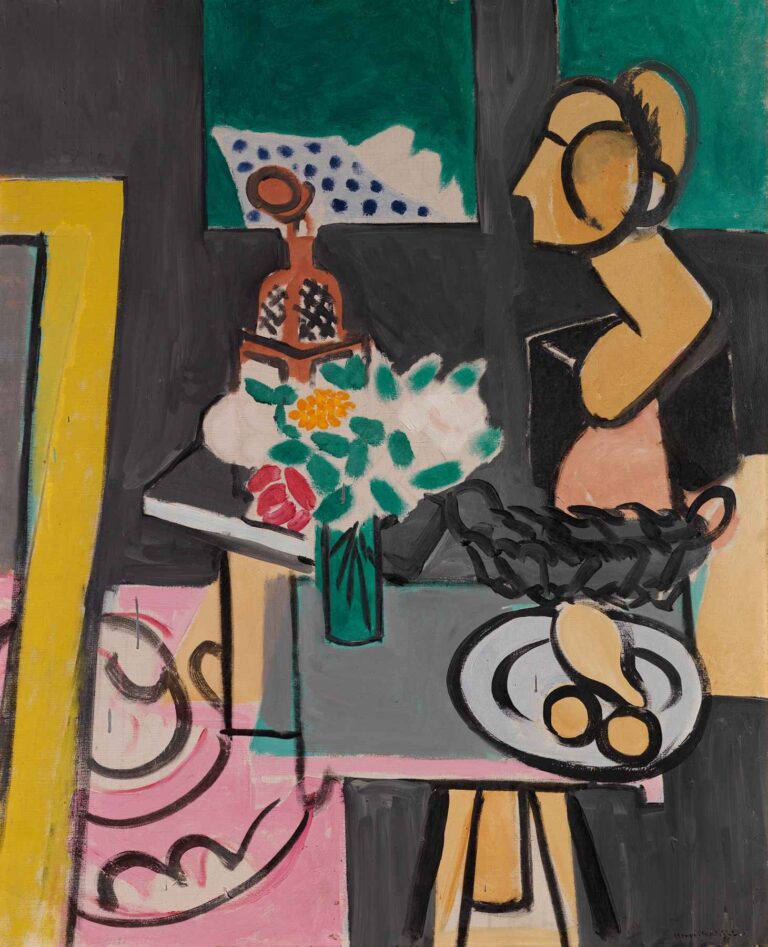
Henri Matisse’s 1916 Still Life with Gourds transforms humble fruits into a vibrant study of shape, color contrast, and flattened space, epitomizing modernist still life.

Henri Matisse’s 1919 masterpiece The Venetian Blinds juxtaposes vibrant shuttered light with soft drapery and a solitary figure, creating an intimate play of color and mood.

Henri Matisse’s 1921 Domino Players portrays two women in a domino game, merging intimate domesticity with vibrant color and harmonious composition.
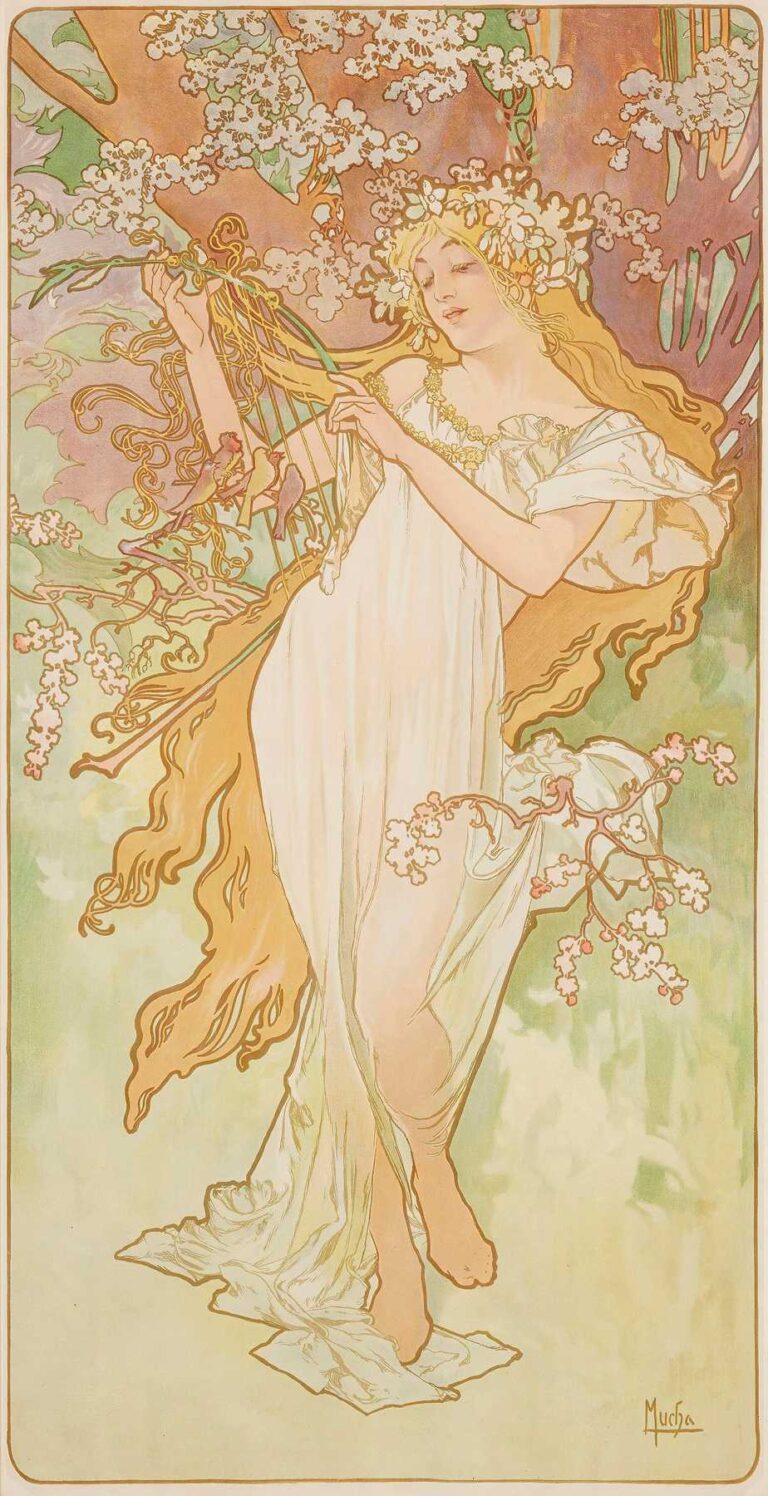
In Les Saisons 2 (1896), Alphonse Mucha captures summer’s lush warmth through a flower-crowned maiden playing a small harp beneath blooming branches, rendered in his signature sinuous lines and pastel palette.
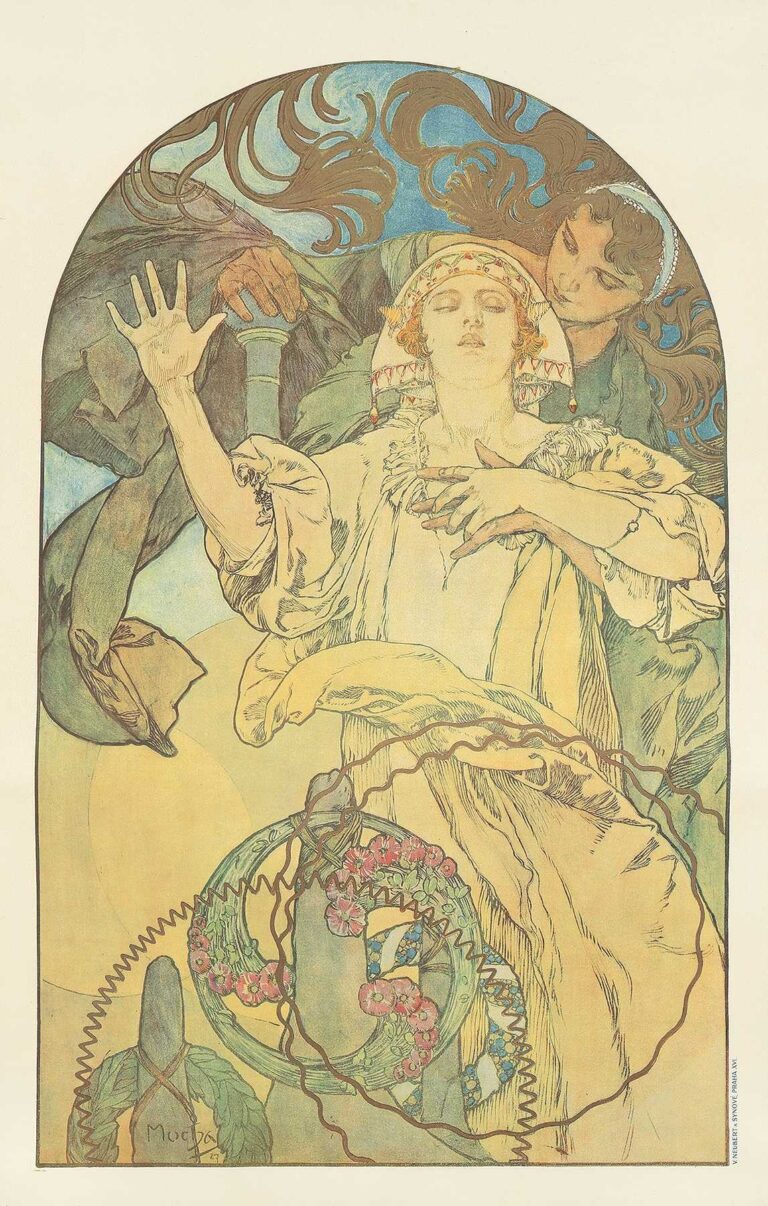
Alphonse Mucha’s 1927 Art Nouveau poster “De Forest Phonofilm” depicts a robed goddess of sound with swirling ribbon-like waves and musical instruments, heralding cinema’s first sound-on-film process.
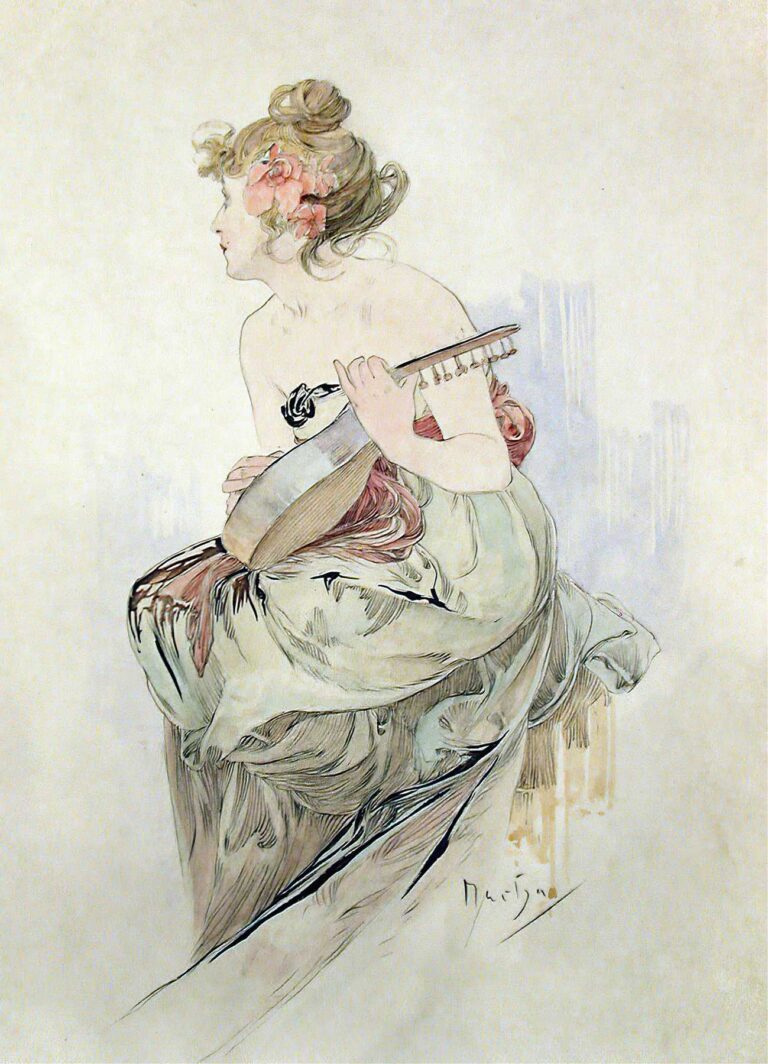
Alphonse Mucha’s delicate watercolor “From the Frontispiece of Le Pater” (c.1899) features an elegant, partially draped maiden seated with a lute, her profile framed by soft drapery folds and a pale, ethereal backdrop, capturing Art Nouveau’s lyrical grace.
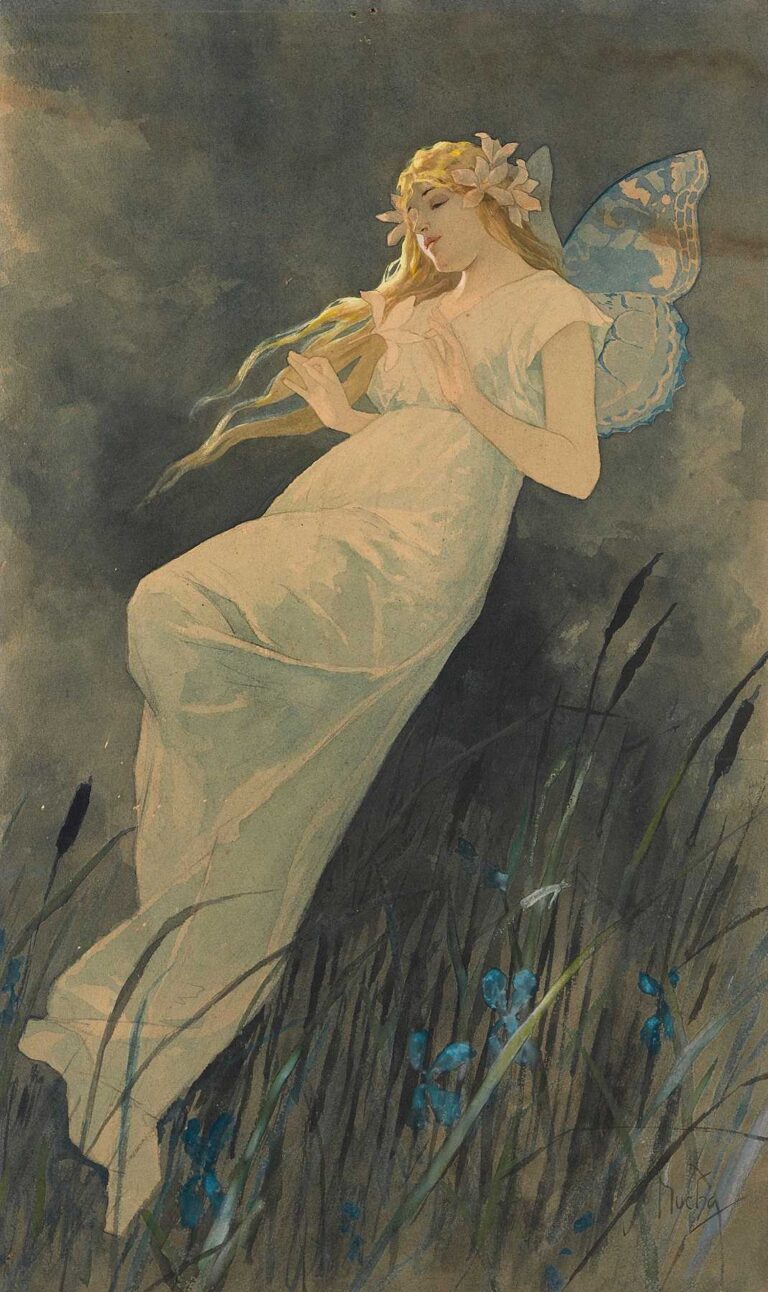
Alphonse Mucha’s 1900 Art Nouveau watercolor “Elf with Iris Flowers” depicts a serene fairy in a flowing gown, crowned with blossoms and clutching irises amid swirling grasses and twilight.
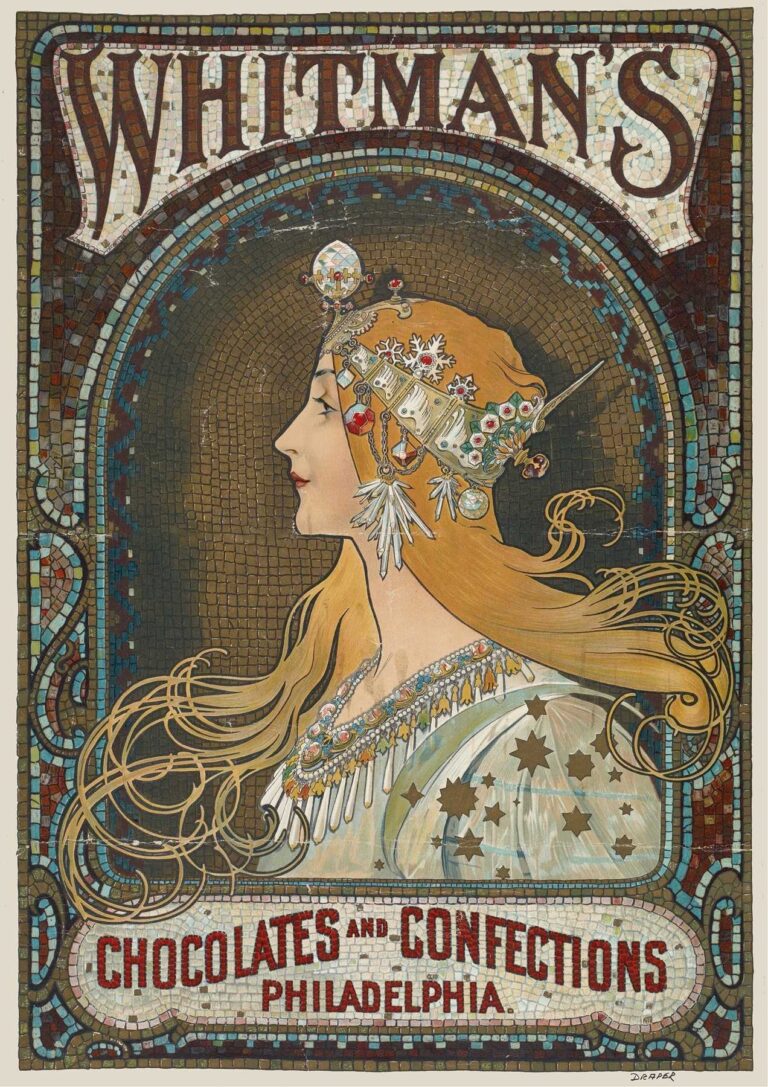
Alphonse Mucha’s iconic Art Nouveau poster for Whitman’s Chocolates (c.1900) depicts a jeweled maiden in profile against a shimmering mosaic halo, symbolizing luxury and refinement.
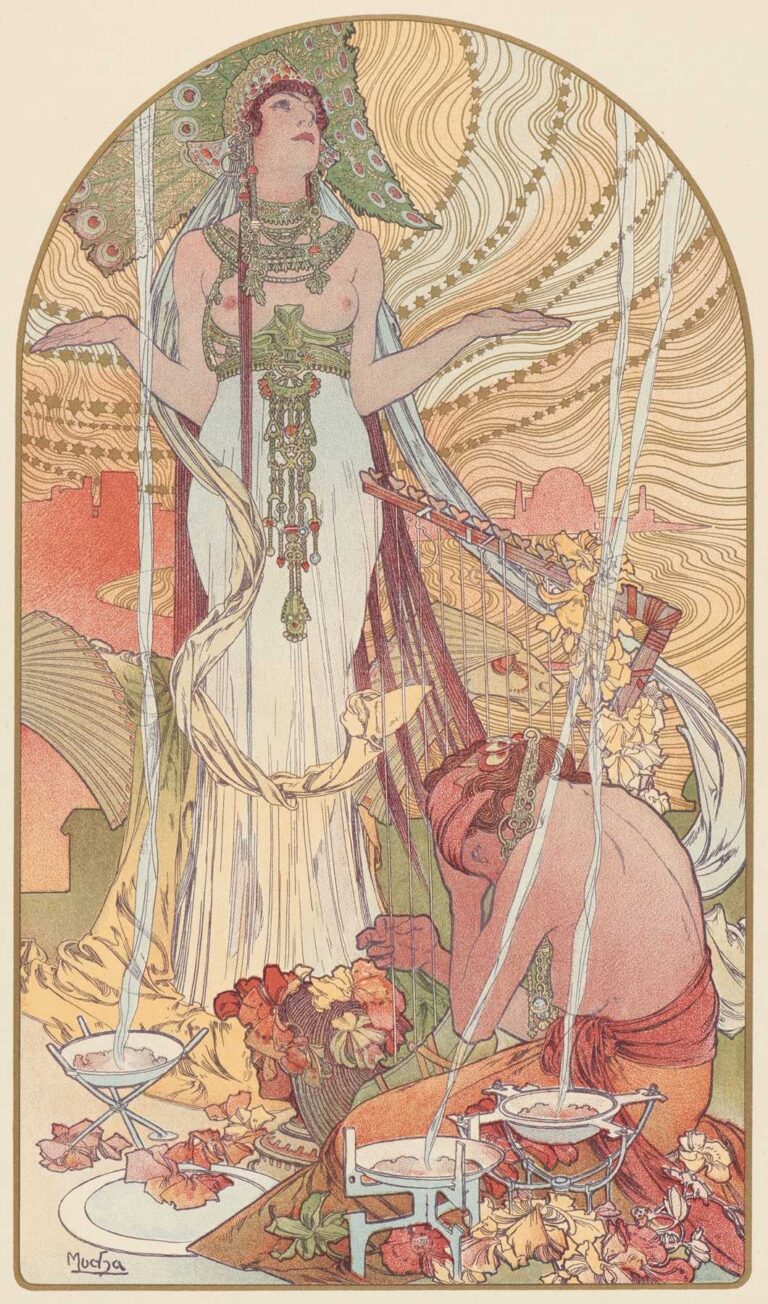
Alphonse Mucha’s 1897 Art Nouveau lithograph “Incantation” depicts a robed woman invoking unseen forces above a kneeling musician at a smoking altar, all set within swirling organic ornament and a dawn-like halo.
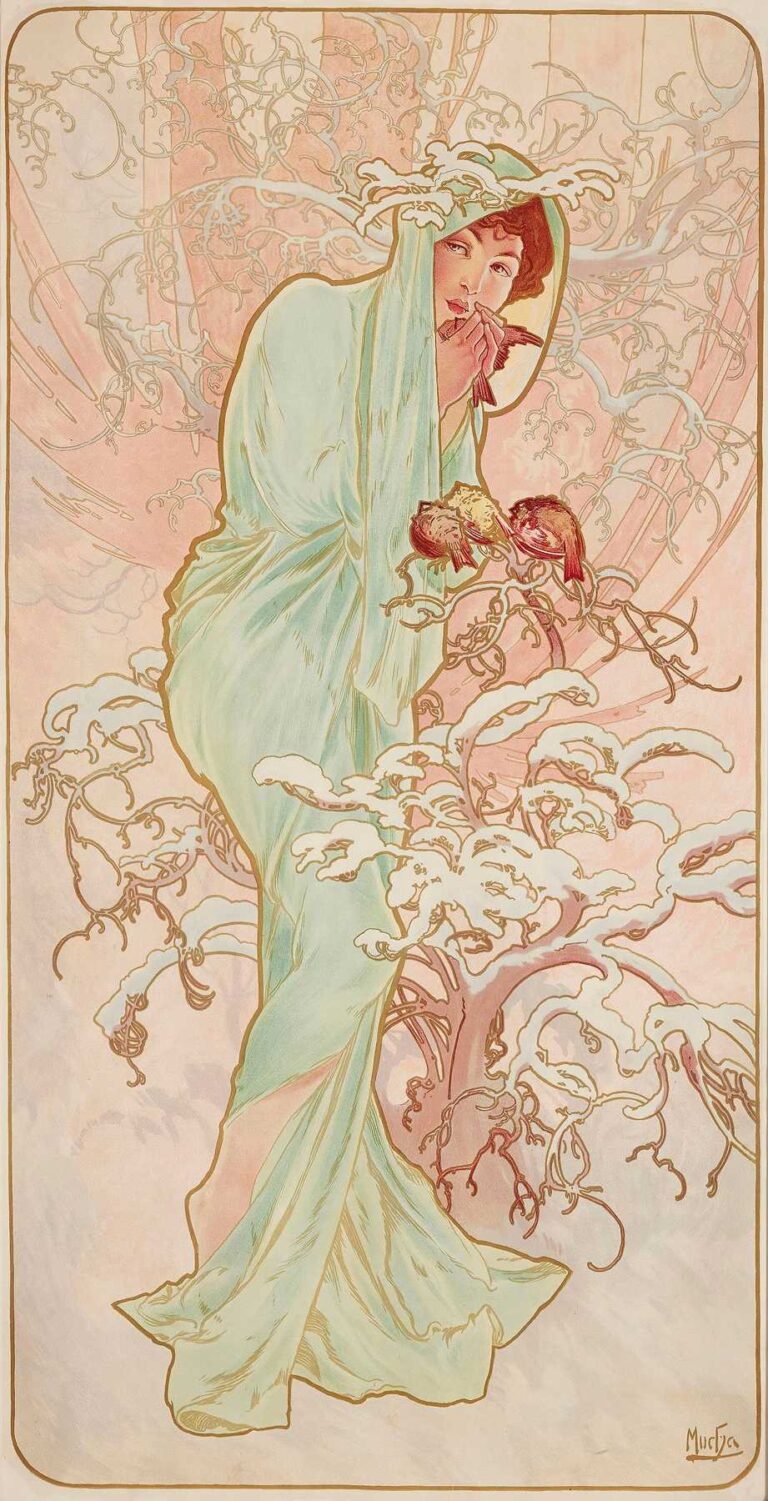
Alphonse Mucha’s 1896 Art Nouveau poster Les Saisons 1 depicts a serene young woman in pale green drapery, framed by swirling vines and delicate blossoms that evoke the freshness of spring.

Alphonse Mucha’s 1897 Art Nouveau poster Salomé portrays the titular femme fatale in a sinuous, flowing gown and poppy-studded wreath, holding a stylized circular platter inscribed with her name amid lush, decorative curves.

Alphonse Mucha’s 1899 Art Nouveau lithograph “Soleil du Dimanche” depicts a wreath-crowned maiden basking in warm sunlight, her flowing hair and drapery merging with stylized floral curves in a harmonious celebration of Sunday’s tranquil leisure.

Alphonse Mucha’s 1926 Art Nouveau poster for the VIII Slet Sokol Festival in Prague combines athletic vigor and Slavic symbolism, depicting a human pyramid topped by a flag-bearer and an allegorical figure, all woven together with patriotic ribbons and floral motifs.
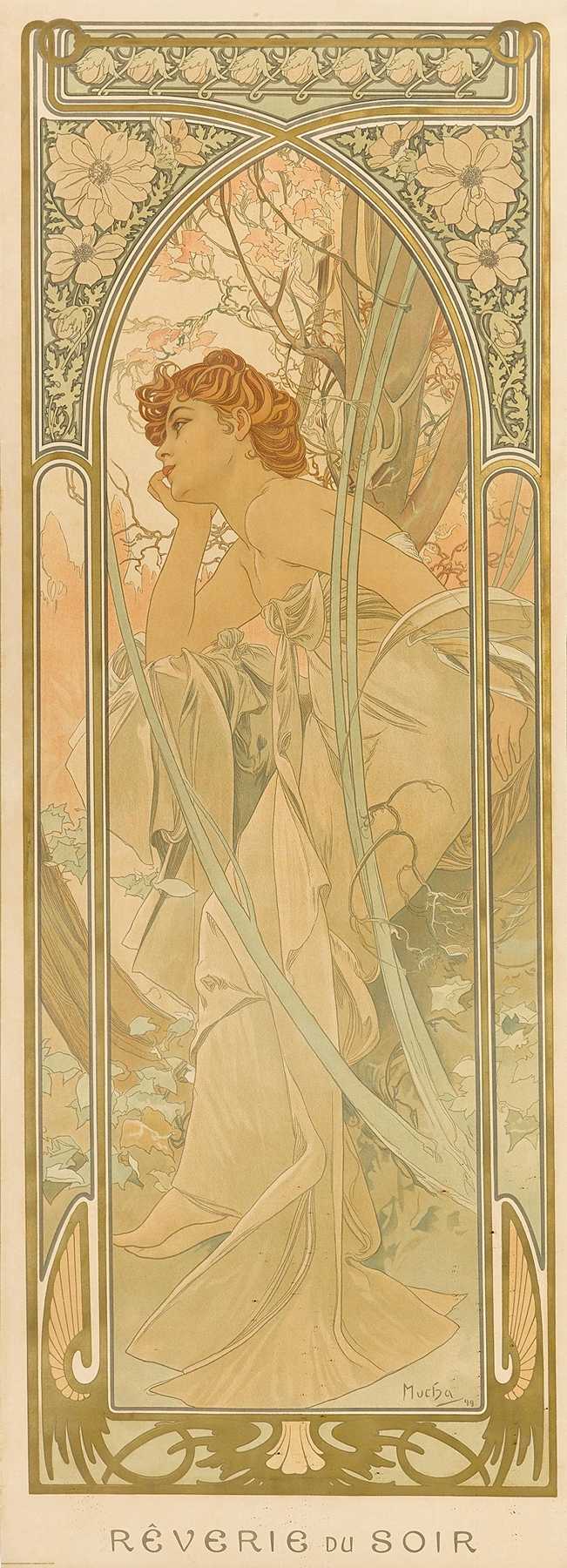
Alphonse Mucha’s 1899 Art Nouveau lithograph Rêverie du Soir features a red-haired maiden in flowing white robes, seated pensively under a blooming tree at twilight, framed by sinuous floral borders in soft pastels.
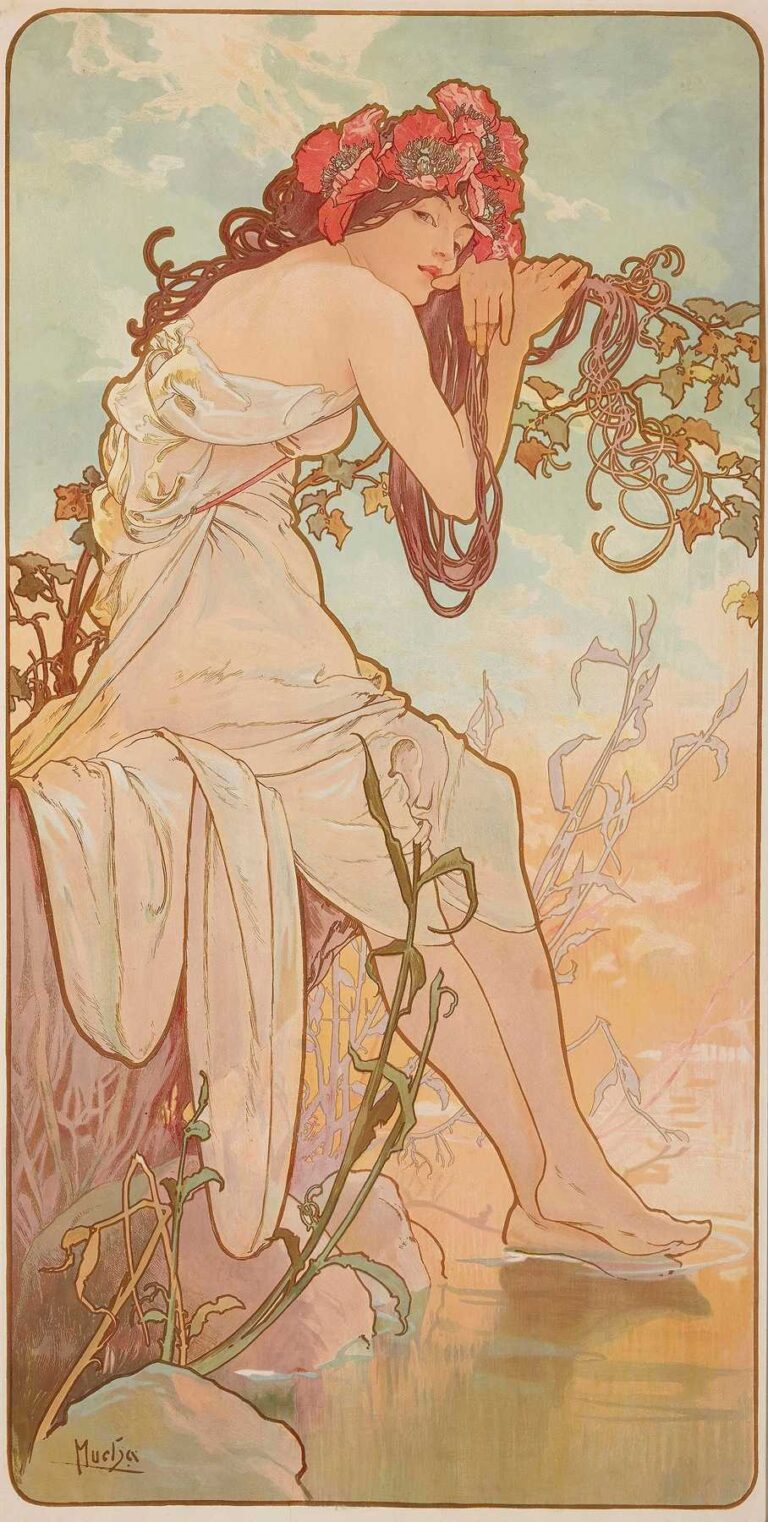
Alphonse Mucha’s 1896 Art Nouveau poster “Les Saisons 4” personifies autumn with a poppy-crowned maiden in flowing robes seated by water’s edge, surrounded by stylized reeds and soft pastels.
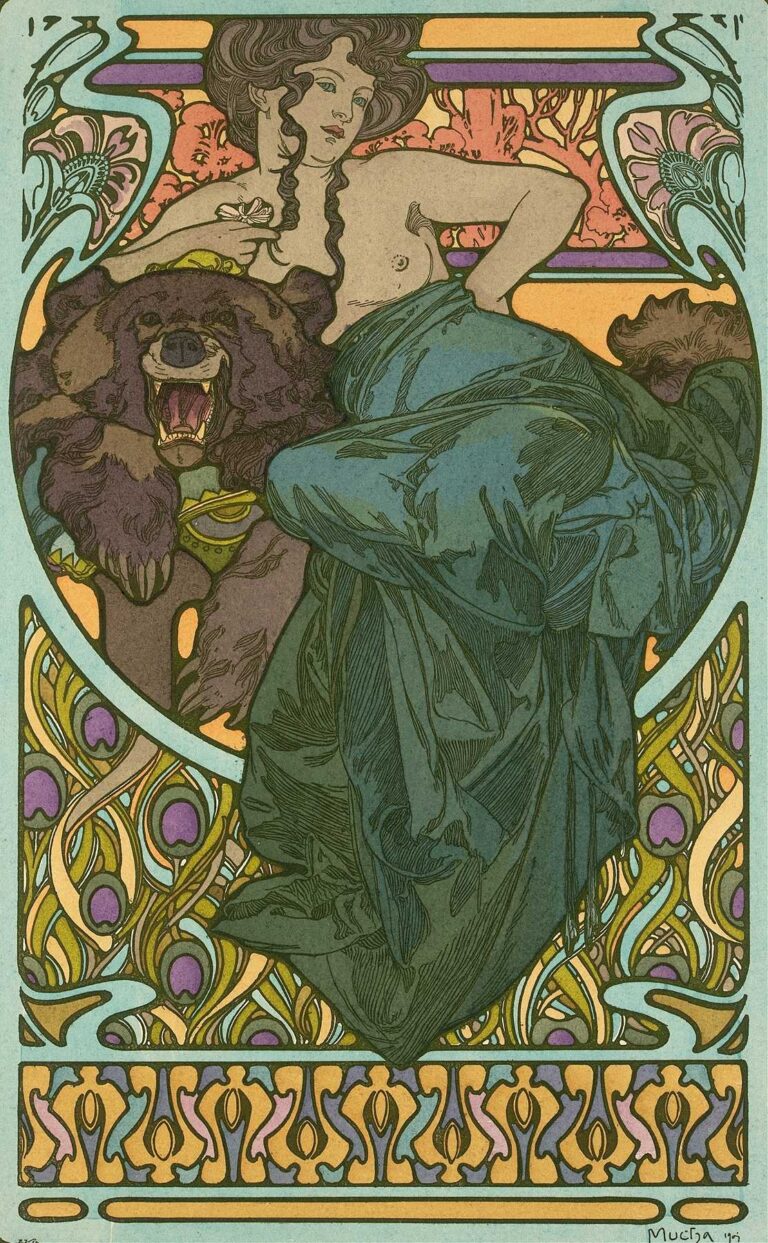
Alphonse Mucha’s untitled 1902 Art Nouveau lithograph depicts an ethereal reclining woman draped in flowing green robes, set within a richly ornamented circular frame of stylized floral and peacock-feather motifs.
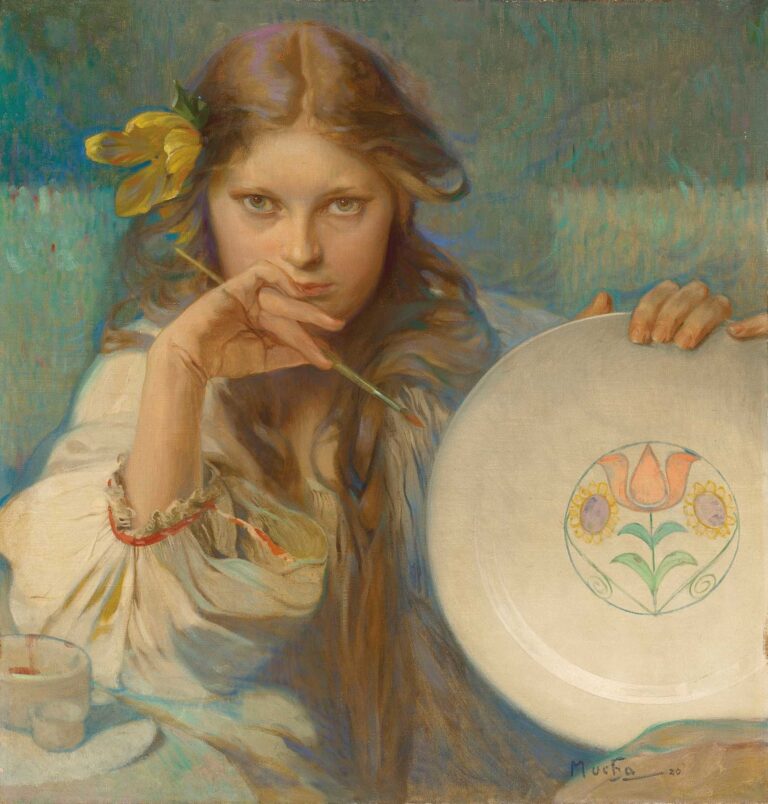
Alphonse Mucha’s 1920 oil painting Girl with a Plate with a Folk Motif depicts a pensive young woman in peasant dress, brush in hand, showcasing a hand-painted ceramic plate adorned with stylized Slavic floral motifs against a softly lit teal backdrop.